After spending some time with Apple’s new base-model 14-inch M5 MacBook Pro, I’ve come to a clear conclusion: It’s an excellent laptop that represents the absolute best iteration of a formula Apple perfected years ago. But whether you should buy one depends entirely on what you’re upgrading from and what you actually do with your computer.
This post contains affiliate links. Cult of Mac may earn a commission when you use our links to buy items.
M5 MacBook Pro review
Apple’s high-end MacBook Pro laptop first launched in 2006 and the workhouse quickly became a a perennial favorite of professionals. Apple unveiled the M5 MacBook Pro on October 15.
As with other recent models, the new M5 MacBook Pro sports Apple’s best and brightest Mac displays, powerful Apple silicon processors and a plethora of ports to plug in peripherals. It runs macOS 26, Apple’s latest desktop computer operating system.
While the MacBook Pro hasn’t changed much in the last few years, under-the-hood improvements make it better than ever.
The 14-inch MacBook Pro with M5 brings next-generation speed and powerful on-device AI to personal, professional and creative tasks. Featuring all-day battery life and a breathtaking Liquid Retina XDR display with up to 1600 nits peak brightness, it’s pro in every way.
Along with its faster CPU and unified memory, M5 features a more powerful GPU with a Neural Accelerator built into each core, delivering faster AI performance.
- Great single-core CPU performance
- Great GPU improvements
- Notably faster SSD speeds
- Excellent display and speaker system
- Same price as previous generation
- Identical design to 3 previous generations
- No Wi-Fi 7 or Thunderbolt 5
- Battery life unchanged from M4
- 16GB base RAM feels limiting for "Pro" machine in 2025.
Table of contents: M5 MacBook Pro review
- First impressions: Familiarity breeds … excellence?
- The M5 chip: Where the real story lives
- Real-world performance on day-to-day tasks
- Where M5 flexes its muscles
- The AI revolution hasn’t quite arrived
- Storage: Finally, real improvements
- Comparing M5 to M4: Should you upgrade?
- The bigger picture: Should you buy or wait?
- Conclusion: M5 MacBook Pro review
First impressions: Familiarity breeds … excellence?
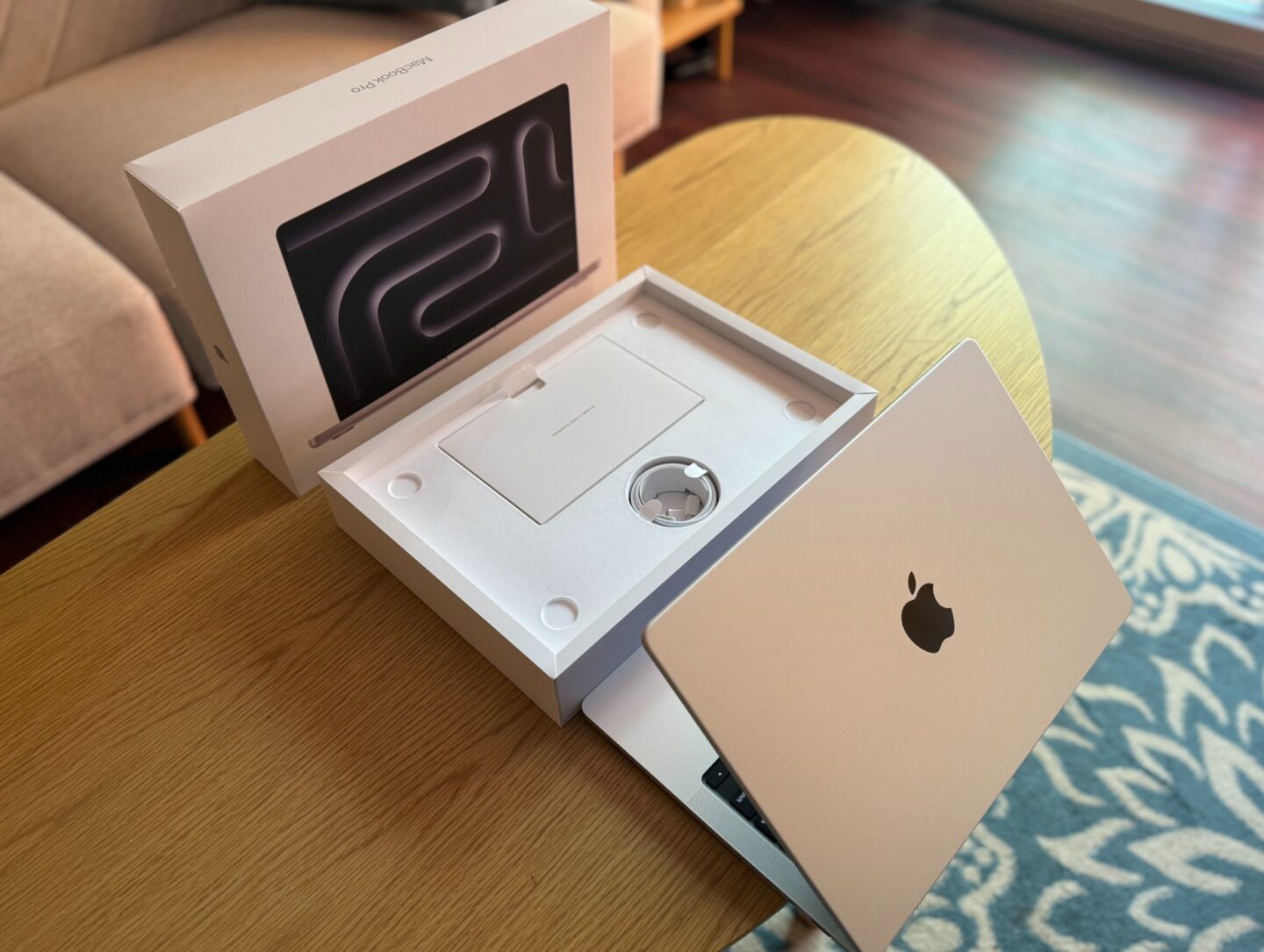
Photo: David Snow/Cult of Mac
When I unboxed the silver base-level M5 MacBook Pro (10-core CPU/10-core GPU), 16GB unified memory, 512GB SSD), I experienced an immediate sense of déjà vu. This is, in every visible way, the exact same laptop Apple released last year with the M4 chip (and very similar to the M4 Pro model I bought and reviewed). The same gorgeous 14.2-inch Liquid Retina XDR display. The same sturdy aluminum chassis measuring 12.31 x 8.71 x 0.61 inches and weighing 3.4 pounds. The same port selection: three Thunderbolt 4 USB-C ports, MagSafe 3, HDMI, SD card slot and headphone jack.
Even the nano-texture display option, 12MP Center Stage camera and six-speaker sound system carry over unchanged from the previous generation. Apple didn’t even update to Wi-Fi 7 (we’re still on Wi-Fi 6E) or Thunderbolt 5, which feels like a missed opportunity in late 2025.
Is this a problem? Not really. Early reviewers more or less love the laptop. The design Apple settled on in 2021 with M1 machines remains genuinely excellent. But after four years of the same aesthetic, I’m definitely ready for something fresh. The silver finish I tested is elegant but a little bit prone to fingerprints.
The M5 chip: Where the real story lives
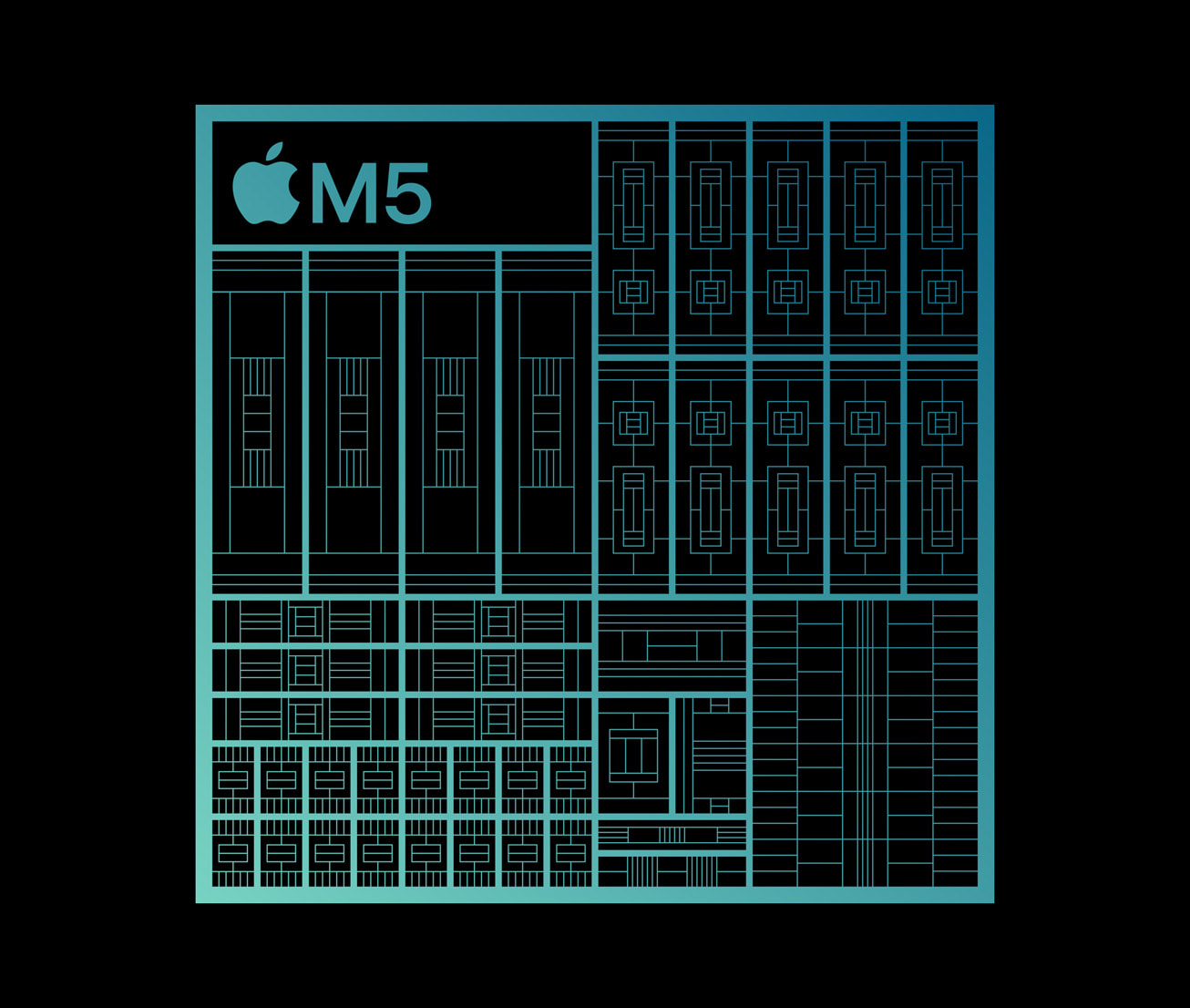
Photo: Apple
Here’s where things get interesting. The M5 chip features a next-generation GPU with a Neural Accelerator in each core, delivering up to 3.5 times the AI performance and up to 1.6 times faster graphics than the M4.
Apple also claims up to 20% better multi-threaded CPU performance, though both chips share the same 10-core configuration (four performance cores, six efficiency cores).
Real-world performance on day-to-day tasks
For basic productivity work — and let’s be honest, that’s what most people do most of the time — the M5 feels virtually identical to the M4. I spent hours in Safari with 20+ tabs open and bouncing between e-mail, Messages, Slack and various productivity apps. Everything felt nearly instantaneous. App launches were snappy. Switching between workspaces felt seamless.
The enhanced unified memory bandwidth (153GB/s, up from 120GB/s on the M4) primarily benefits those running AI-heavy workloads or managing extremely large files. For email and web browsing? You probably won’t notice the difference.
Where M5 flexes its muscles
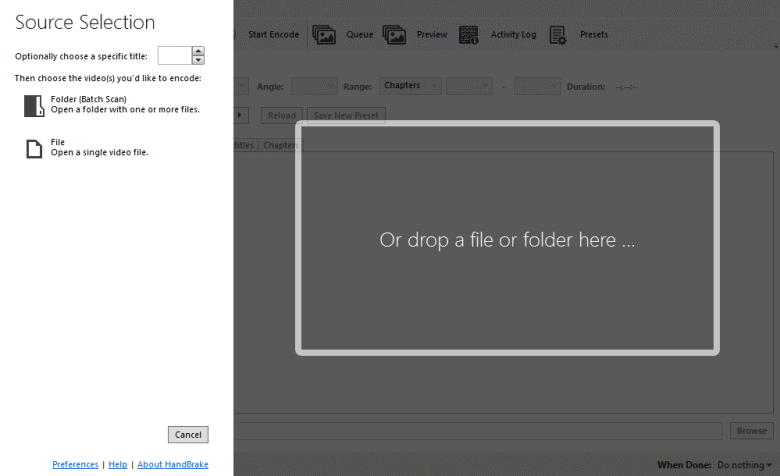
Screenshot: HandBrake
The performance gap becomes more apparent when you push the machine harder. I tested video transcoding using HandBrake to convert a 4K video to 1080p. The M5 completed the task in short order — refreshingly fast compared to previous similar efforts on older machines.
In Geekbench 6, the M5 achieved a single-core score of 4,288, roughly a 10% boost over the M4, which aligns with Apple’s typical year-over-year improvements. Multi-core performance saw an even bigger jump at around 19% to 21% depending on the benchmark, likely due to improvements in the efficiency cores.
The GPU improvements are more dramatic. Gaming performance saw real gains, with some reviewers’ tests for titles like Resident Evil 4 Remake hitting 55 FPS at 1080p without upscaling, and 100-120 FPS with MetalFX enabled. That’s genuinely impressive for a base-model MacBook, though dedicated gaming laptops still offer better value for hardcore gamers.
The AI revolution hasn’t quite arrived
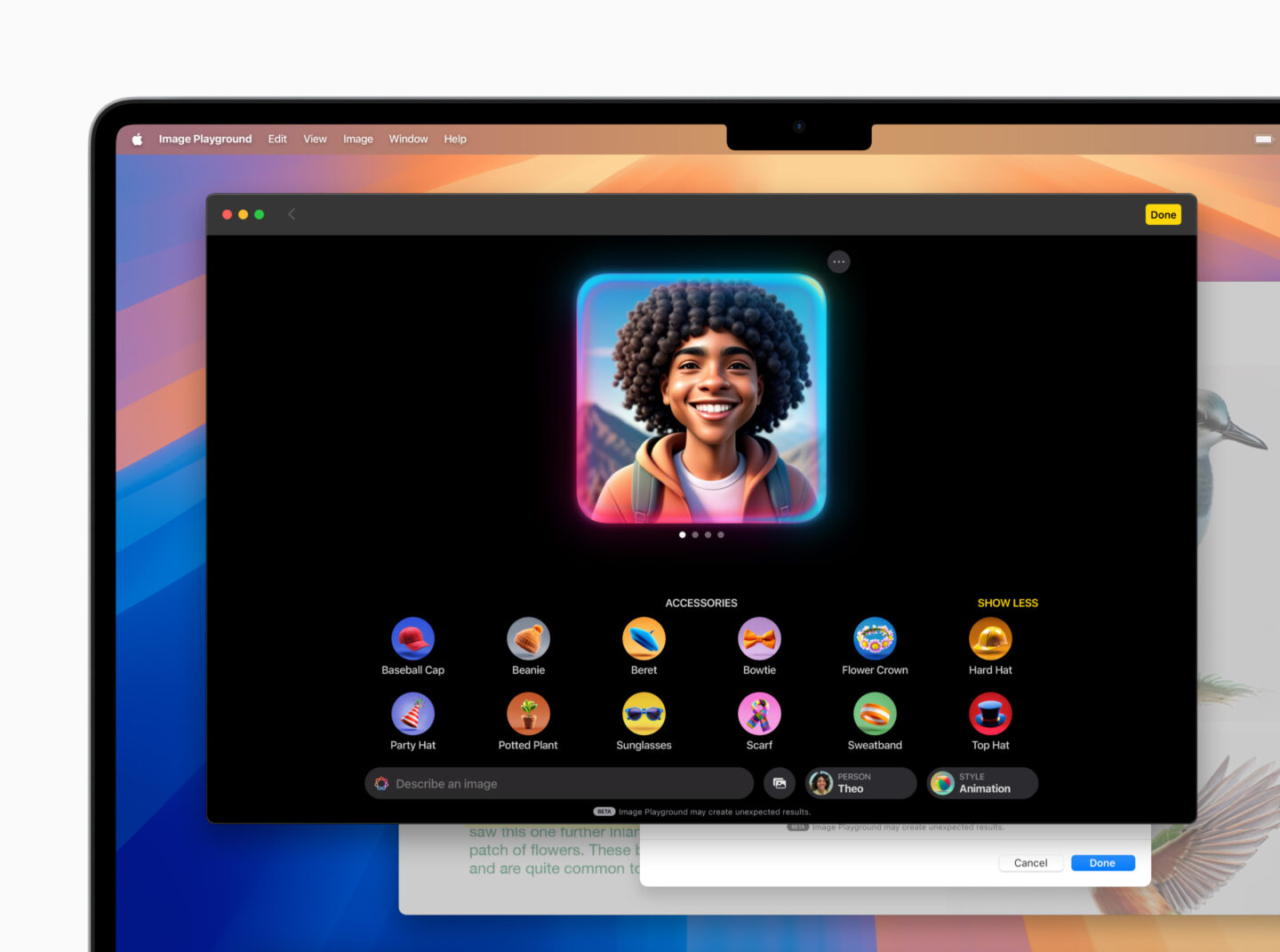
Screenshot: Apple
Apple’s making big claims about AI performance, and the benchmarks support them. The M5’s GPU features a dedicated Neural Accelerator in each core, delivering over 4x peak GPU compute compared to M4. In apps designed to leverage this — like running local LLMs or AI image generation — the improvements are real.
But here’s the thing: Most people aren’t running Stable Diffusion models locally or using AI-heavy creative tools daily. Apple Intelligence features like Writing Tools and improved Siri work great, but they also worked great on the M4. For the average user, the AI capabilities feel more like future-proofing than a practical reason to upgrade today.
Storage: Finally, real improvements
One area where I noticed tangible improvements is storage performance. Apple claims up to 2 times faster SSD performance than the M4, and this translated to noticeably quicker imports of large photo libraries and exports of video files. Transferring a 50GB folder from an external drive took about 45 seconds on the M5.
Apple also now offers a 4TB storage option (for an eye-watering $1,200 upgrade), up from the 2TB maximum on the M4. Most users will be fine with 512GB or 1TB, but power users will appreciate having the option for more.
Battery life: The one area of slight disappointment

Image: Apple
Apple rates the M5 MacBook Pro for up to 24 hours of video playback — identical to the M4’s rating. In testing, I got roughly 12 to 13 hours of mixed usage (web browsing, document editing, video streaming at medium brightness). That’s no better than the M4 model.
According to macOS power metrics, M5 draws an average of 28W during video encoding tests compared to around 17W for M4. For less intensive tasks, efficiency seemed comparable, but it’s clear Apple is pushing performance over battery optimization with this generation.
Don’t misunderstand — 12-plus hours is still excellent, and better than virtually any Windows laptop. But it’s not an improvement.
Comparing M5 to M4: Should you upgrade?
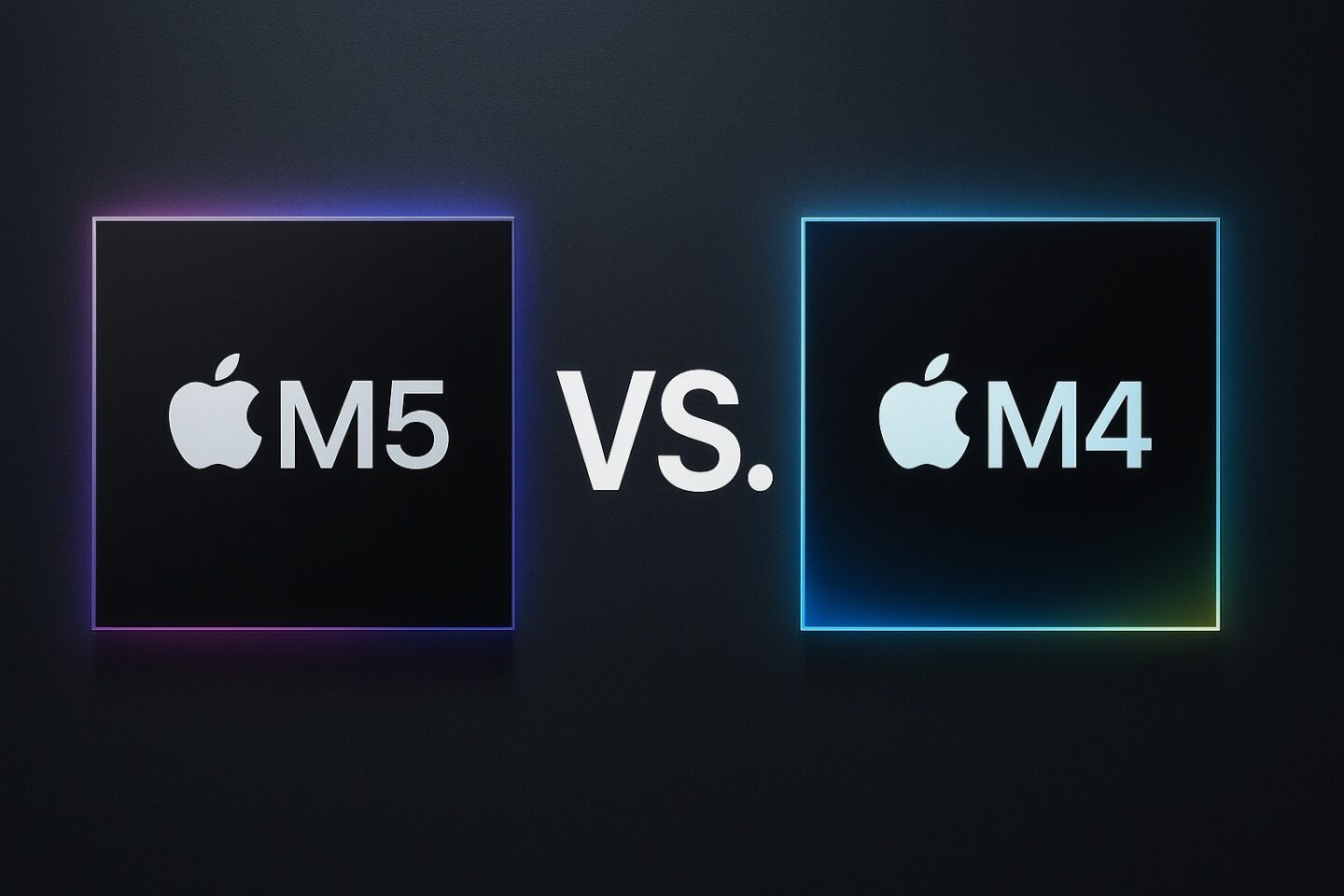
AI image: ChatGPT/Cult of Mac
If you own an M4 MacBook Pro, the answer is simple: No, you should not upgrade. The improvements are incremental at best, and unless you’re doing AI-heavy work or need that 4TB storage option, you won’t benefit meaningfully from the M5.
Even Apple seems to acknowledge this positioning, as the M5 update is clearly targeted at users upgrading from M1, M2 or Intel machines rather than M4 owners.
Who should buy M5 over M4?
- First-time MacBook Pro buyers: At the same $1,599 price point, there’s no reason not to get the latest chip.
- Intel or M1 users: You’ll see massive improvements in every metric.
- AI and ML developers: The Neural Accelerators make a real difference for your workloads.
- Photographers and video editors: Faster storage and GPU performance will improve your workflow.
- Future-proofers: If you plan to keep this laptop 5-plus years, the M5 will age better.
Who should consider a discounted M4 instead?
- Budget-conscious buyers: If you can find an M4 for $200 or 300 off, it’s incredible value.
- General productivity users: For email, web and office work, the M4 is already overkill.
- M3 or M4 owners: The generational leap isn’t worth the upgrade cost.
M5 vs. M4 Pro comparison: A more complex decision
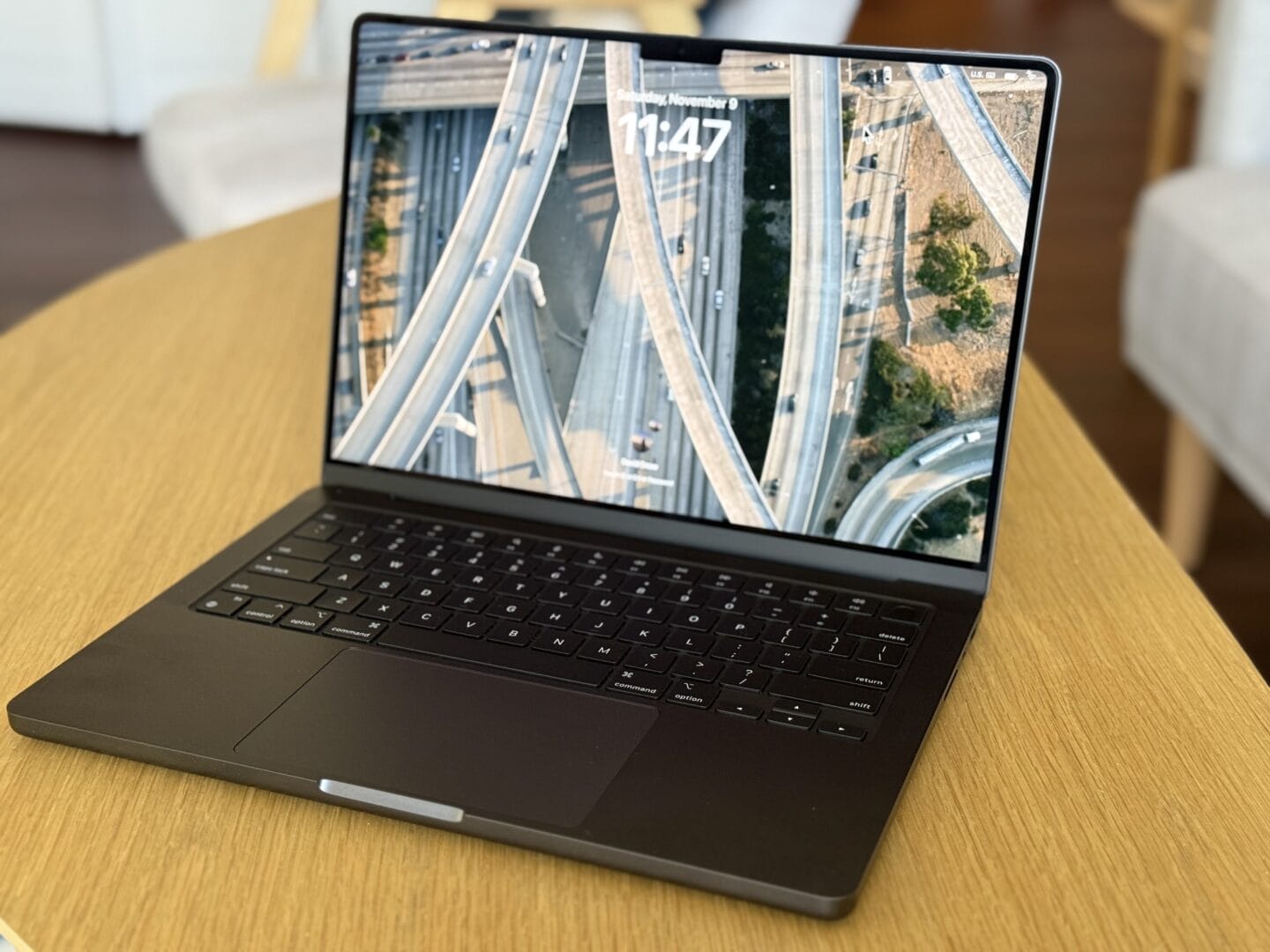
Photo: David Snow/Cult of Mac
Now let’s tackle the more interesting comparison: How does the base M5 stack up against last year’s M4 Pro (starting at $1,999 with 12-core CPU, 16-core GPU and 24GB RAM)? That machine I bought and reviewed, happily replacing an M1 Pro MacBook Pro.
M4 Pro features up to a 14-core CPU (10 performance cores, 4 efficiency cores) and up to a 20-core GPU — potentially double the GPU cores of the M5. So in multi-threaded workloads, M4 Pro handily beats M5. For tasks like 3D rendering, complex video editing with multiple 4K streams, or software compilation, the M4 Pro is noticeably faster. If you, unlike me, actually do those things a lot.
M4 Pro also supports up to 64GB of unified memory with 273GB/s of memory bandwidth — significantly more than the M5’s 32GB maximum and 153GB/s bandwidth. If you’re working with massive datasets, running multiple virtual machines or need tons of RAM for your creative workflows, the M4 Pro provides headroom the M5 simply can’t match.
Features: M4 Pro’s key advantages
M4 Pro models include several features absent from the base M5:
- Thunderbolt 5: M4 Pro and M4 Max MacBook Pros feature three Thunderbolt 5 ports offering speeds up to 120 Gb/s with Bandwidth Boost — triple the bandwidth of the M5’s Thunderbolt 4 ports. For professionals working with external RAIDs, high-resolution video workflows, or multiple 6K displays, this is a game-changer.
- M4 Pro can drive up to three 6K displays at 60Hz over Thunderbolt, or more complex multi-monitor setups including 8K displays. The base M5 maxes out at two external displays at 6K.
- More memory comes standard: M4 Pro starts with 24GB of RAM versus 16GB on the M5. For $400 more, you’re getting 50% more memory out of the box, which makes a real difference for pro applications.
Efficiency: Where the M5 surprises
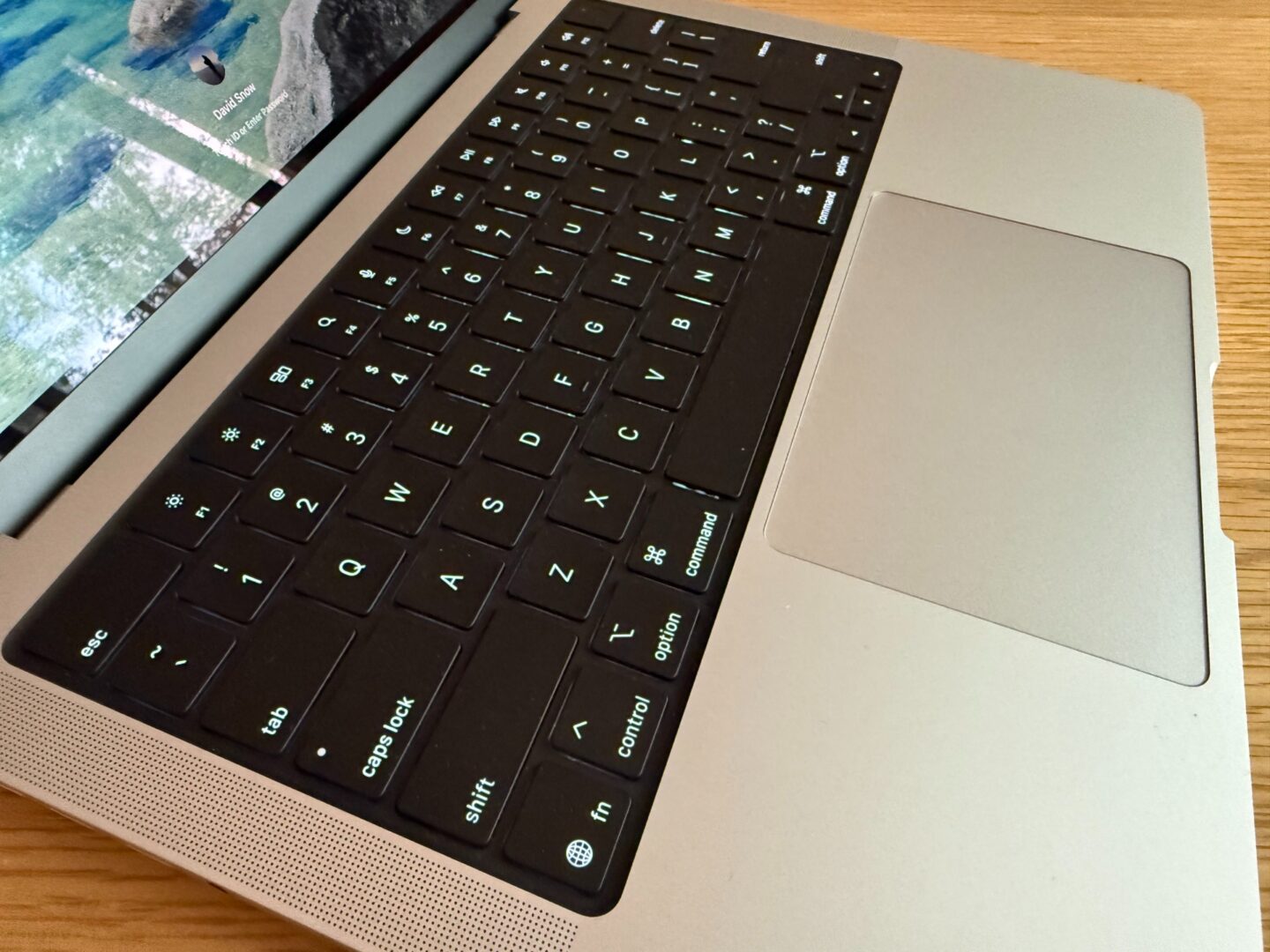
Photo: David Snow/Cult of Mac
Here’s where things get interesting. Despite being the “lesser” chip, M5 actually offers better efficiency for certain workloads. M5’s Neural Accelerators deliver over 4 times peak GPU compute for AI workloads compared to M4. That means it can actually outperform the M4 Pro in specific AI-driven tasks while consuming less power.
For single-threaded performance, the M5 features what Apple calls “the world’s fastest CPU core.” And in single-core benchmarks, it edges out even the M4 Pro. If your workflow is primarily single-threaded — think programming, some audio production or general productivity — M5’s performance cores are as fast as you can get.
Value proposition: M5 vs M4 Pro
At $1,599 versus $1,999, you’re paying $400 more for the M4 Pro base configuration. Here’s how I’d think about that decision:
Choose M5 if you:
- Do mostly single-threaded work with occasional bursts of heavy lifting.
- Don’t need more than 16GB RAM (or are willing to configure up to 32GB).
- Work primarily with local files rather than massive external storage arrays.
- Value portability and battery life over maximum performance.
- Are interested in AI/ML work but not professional video production.
Choose M4 Pro if you:
- Regularly work with 4K/8K video or large 3D projects.
- Need Thunderbolt 5 for high-speed external storage or multiple displays.
- Require more than 32GB of RAM.
- Run heavily multi-threaded workloads (rendering, compilation, simulation).
- Want the absolute best MacBook Pro experience regardless of cost.
For my own fairly wimpy use case — writing, web development, photo editing and occasional video work — the base M5 is more than sufficient. But I’d be lying if I said I didn’t miss Thunderbolt 5 when connecting to my external monitor setup (including future versions of it).
The bigger picture: Should you buy or wait?
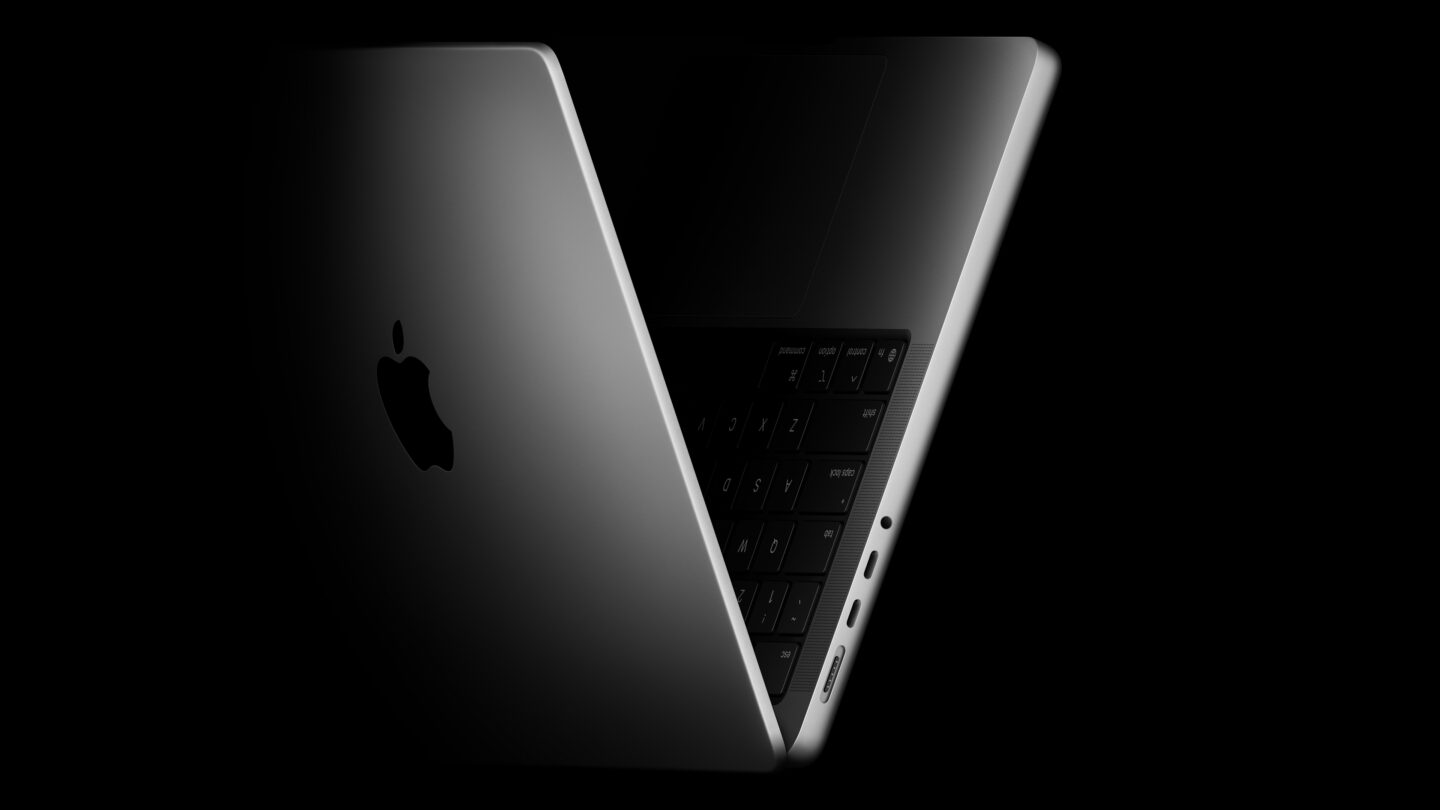
Photo: Apple
Rumors suggest that the M6 MacBook Pro will bring more significant design changes, potentially including OLED displays and a refreshed aesthetic. If you’re not in a rush and can wait until late 2026, you might be rewarded with a more meaningful upgrade.
That said, waiting for the “next big thing” in tech is a fool’s errand. There’s always something better around the corner. If you need a new laptop now, the M5 MacBook Pro is an excellent choice that will serve you well for years.
Who should buy it:
- First-time MacBook Pro buyers at $1,599.
- Users upgrading from Intel, M1 or M2 Macs.
- Developers and creatives needing strong single-core performance.
- Anyone wanting the latest tech without Pro/Max pricing.
Who should skip it:
- M4 MacBook Pro owners (unless you absolutely need that AI performance).
- Users who can find M4 models on significant discount.
- Those who need Thunderbolt 5 (get M4 Pro instead).
- Anyone waiting for a design refresh.
Conclusion: M5 MacBook Pro review
The 14-inch M5 MacBook Pro is a superb laptop that doesn’t reinvent anything. It’s the best version of a base-model formula Apple has perfected, offering stellar performance, excellent build quality and that gorgeous display in a familiar package.
So the M5 MacBook Pro is an incremental but worthy upgrade that keeps Apple’s base-model Pro at the top of the laptop market. It’s not exciting, but it’s exceptionally competent. Sometimes, that’s exactly what you need.
The 14-inch MacBook Pro with M5 brings next-generation speed and powerful on-device AI to personal, professional and creative tasks. Featuring all-day battery life and a breathtaking Liquid Retina XDR display with up to 1600 nits peak brightness, it’s pro in every way.
Along with its faster CPU and unified memory, M5 features a more powerful GPU with a Neural Accelerator built into each core, delivering faster AI performance.
- Great single-core CPU performance
- Great GPU improvements
- Notably faster SSD speeds
- Excellent display and speaker system
- Same price as previous generation
- Identical design to 3 previous generations
- No Wi-Fi 7 or Thunderbolt 5
- Battery life unchanged from M4
- 16GB base RAM feels limiting for "Pro" machine in 2025.
★★★★☆
Apple did not provide Cult of Mac with a review unit for this article. See our reviews policy, and check out other in-depth reviews of Apple-related items.
![Don’t call it boring. M5 MacBook Pro gets a lot right. [Review] M5 MacBook Pro review](https://www.cultofmac.com/wp-content/uploads/2025/10/M5-MacBook-Pro-review-1020x574.jpg)


